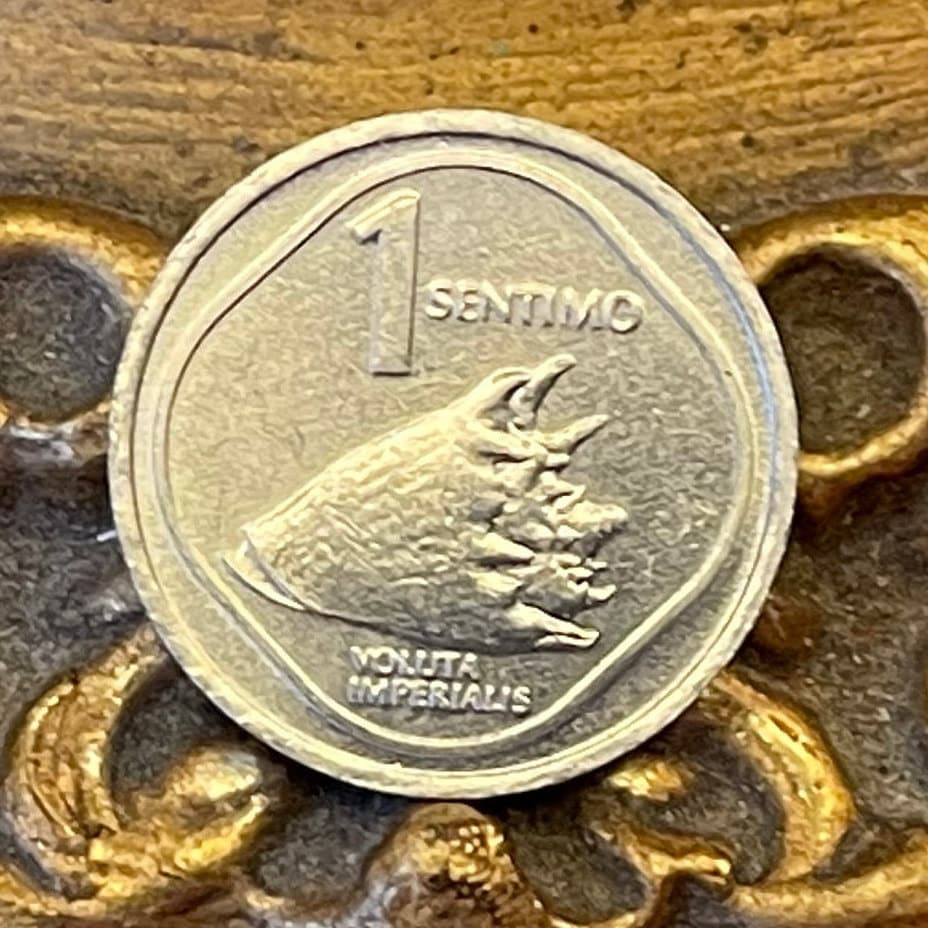elemintalshop
Imperial Volute Shell & Lapulapu 1 Sentimo Philippines Authentic Coin Money for Jewelry and Craft Making (Giant Seashell) (Freedom Fighter)
Imperial Volute Shell & Lapulapu 1 Sentimo Philippines Authentic Coin Money for Jewelry and Craft Making (Giant Seashell) (Freedom Fighter)
Couldn't load pickup availability
Imperial Volute Shell & Lapulapu 1 Sentimo Philippines Authentic Coin Money for Jewelry and Craft Making (Magellan Killer)
Obverse: Lapulapu, the first Filipino to resist Spanish domination in the Battle of Mactan, in which Ferdinand Magella, leader of the Spanish expedition was killed on April 27, 1521.
Lettering: REPUBLIKA NG PILIPINAS
LAPULAPU
Translation:
REPUBLIC OF THE PHILIPPINES
LAPULAPU
Reverse: An Imperial Volute sea shell, one of the species indigenous to the Philippines.
Lettering: 1 SENTIMO
VOLUTA
IMPERIALIS
Features
Issuer Philippines
Period Republic (1946-date)
Type Standard circulation coin
Years 1983-1993
Value 1 Sentimo (0.01 PHP)
Currency Piso (1967-date)
Composition Aluminium
Weight 0.7 g
Diameter 15.5 mm
Shape Round
Technique Milled
Orientation Medal alignment ↑↑
Demonetized 2 January 1998
Number N# 2464
References KM# 238, Schön# 79
Wikipedia:
Cymbiola imperialis, the imperial volute, is a species of sea snail, a marine gastropod mollusk of the genus Cymbiola in the family Volutidae, the volutes.
Description
Shells of Cymbiola imperialis can reach a size of 70–250 millimetres (2.8–9.8 in). These large and glossy shells are elongate and fusiform, light to heavy in weight. The basic color is whitish. The spire is high, with canaliculate sutures, strong red-brown axial ribs and narrow red-brown spiral lines. The aperture is whitish, elongate-ovate, with the outer lip showing many black denticles. The operculum is dark brown, thick and small.
Distribution
This species can be found in the Philippines, Sulu Sea.
*****
Wikipedia:
Lapulapu or Lapu-Lapu (fl. 1521), whose name was first recorded as Çilapulapu, was a datu of Mactan in the Visayas. He is best known for the Battle of Mactan that happened at dawn on April 27, 1521, where he and his warriors defeated the forces of Portuguese explorer Ferdinand Magellan (Fernão de Magalhães, Fernando de Magallanes) and his native allies Rajah Humabon and Datu Zula. Magellan's death ended his voyage of circumnavigation and delayed[dubious – discuss] the Spanish occupation of the islands by over forty years[citation needed] until the expedition of Miguel López de Legazpi in 1564. Legazpi continued the expeditions of Magellan, leading to the colonization of the Philippines for 333 years.
Modern Philippine society regards him as the first Filipino hero because of his resistance to imperial Spanish colonization. Monuments of Lapulapu have been built all over the Philippines to honor Lapulapu's bravery against the Spaniards. The Philippine National Police and the Bureau of Fire Protection use his image as part of their official seals.
Besides being a rival of Rajah Humabon of neighboring Cebu, very little is reliably known about the life of Lapulapu. The only existing primary source mentioning him by name is the account of Antonio Pigafetta, and according to historian Resil B. Mojares, no European who left a primary record of Magellan's voyage/vessel "knew what he looked like, heard him speak (his recorded words of defiance and pride are all indirect), or mentioned that he was present in the battle of Mactan that made him famous." His name, origins, religion, and fate are still a matter of controversy.
Share










Nice addition to my collection.









